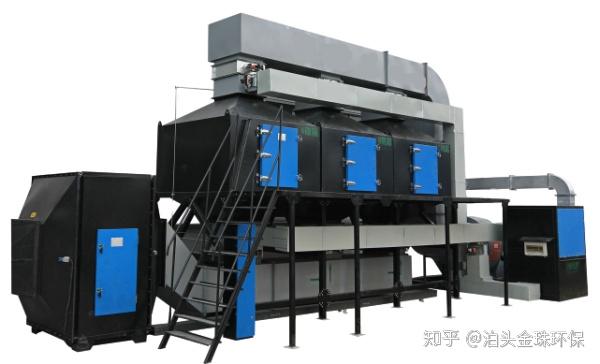基于主从博弈的综合能源服务商动态定价策略研究(Matlab代码实现)
个人主页:研学社的博客 欢迎来到本博客❤️❤️ /> 博主优势: 博客内容尽量做到思维缜密,逻辑清晰,为了方便读者。>⛳️座右铭:
个人主页:研学社的博客
欢迎来到本博客❤️❤️
/>
博主优势: 博客内容尽量做到思维缜密,逻辑清晰,为了方便读者。
>
⛳️座右铭:行百里者,半于九十。
本文目录如下:
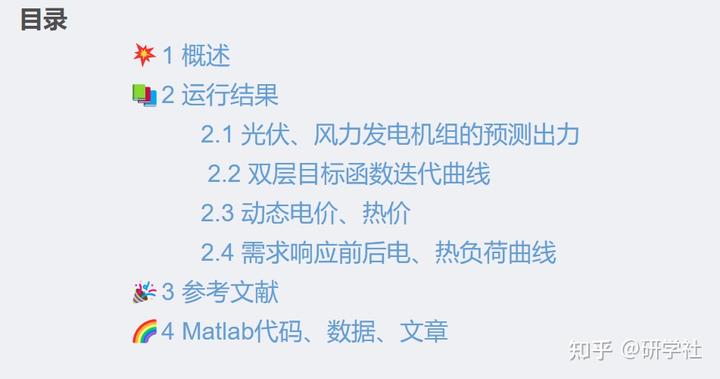
1 概述
文献来源:

随着综合能源技术的推广和能源交易的多样化,不同类型能源的交易价格和交易过程表现出更强的耦合性和相关性。针对综合能源服务商在电热能动态定价过程中的强相关性,以及综合能源服务商与热负荷用户的博弈关系,提出一种基于主从博弈的综合能源服务商多能源动态定价模型。首先,结合综合能源服务商的聚合设备和运行原理,构建综合能源服务商最优动态定价模型,实现自身经济效益最大化;其次,以消费者剩余最大化为目标,构建用户侧收益模型;结合他们在电力市场的不同地位,采用斯塔克尔伯格模型来处理综合能源服务商与用户之间的博弈关系。最后,以某热电联产综合能源服务商为例,验证了所提模型和算法的有效性。
原文摘要:
Abstract:
With the promotion of integrated energy technology and the diversification of energy trading, the trading prices and trading process of different types of energy show stronger coupling and relevance. In view of the strong correlation of integrated energy service providers in the dynamic pricing process of electric and thermal energy, and the game relationship between integrated energy service providers and thermal load users needs to be further explored, a multi energy dynamic pricing model of integrated energy service providers based on master-slave game is proposed. Firstly, combined with the aggregation equipment and operation principle of integrated energy service provider, the optimal dynamic pricing model of integrated energy service provider is constructed to maximize its own economic benefits; Secondly, with the goal of maximizing the consumer surplus, the user side revenue model is constructed. Combined with their different positions in the power market, the Stackelberg model is used to deal with the game relationship between integrated energy service providers and users. Finally, a cogeneration integrated energy service provider is taken as an example to verify the effectiveness of the proposed model and algorithm.
文献下载:
链接:https://pan.quark.cn/s/7b06d3bb99ac
提取码:WbYv
本文所研究的IES包括供电部分和供热部分两部分。供电部分由热电联产机组、风能、光伏和储能设备组成。供热部分由热电联产机组和燃气锅炉(GB)组成。基本组成如图所示。
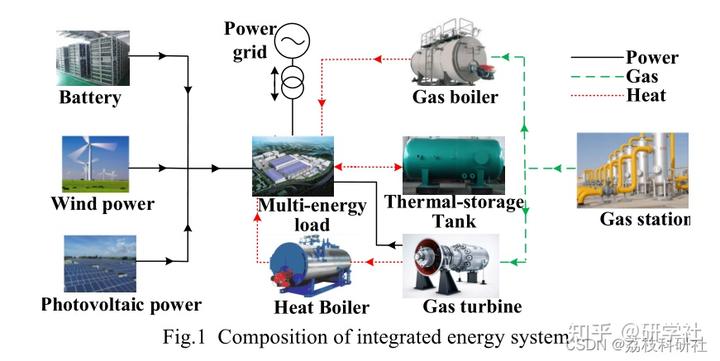
从图2可以看出,IESP是电、热用户的优势能源供应商。IESP的售电和售热定价将影响用户的用电量和热消耗。此外,用户的用电量和热量消耗也将深刻影响IESP的定价。然后构建IESP与用户之间的主从博弈模型。IESP作为领导者,结合市场价格约束和内部聚合单元运行约束,以自身利益最大化为目标制定电热交易价格。作为追随者,每个用户在收到IESP的交易价格信息后,以消费者剩余最大化为目标,调整自己的能耗水平和方式。IESP根据用户的能源消费策略再次调整能源交易价格,形成了一种Stackelberg博弈关系。
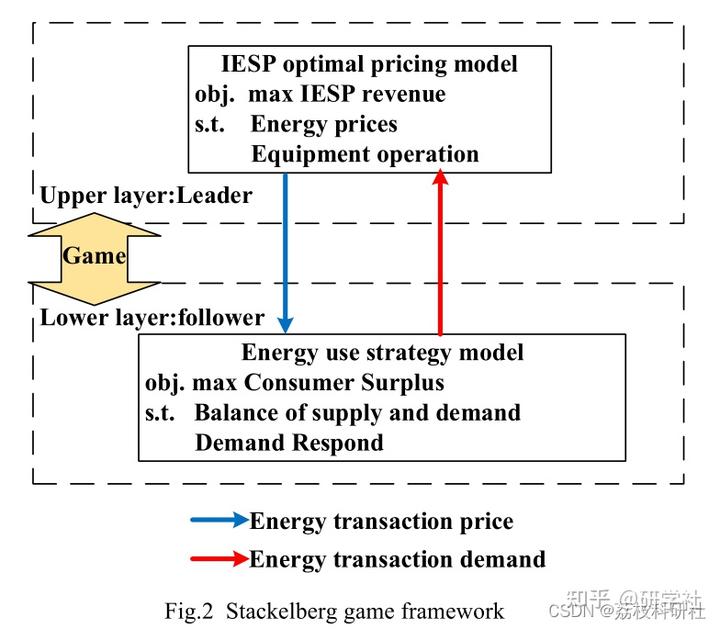
详细文章讲解见第4部分。
2 运行结果
2.1 光伏、风力发电机组的预测出力
在本节中,我们根据实际情况设计了一个测试系统来评估动态定价博弈模型的有效性。IES系统中光伏、风力发电机组的预测输出计划如图3所示,电热负荷预测值如图4所示。CCHP系统参数如表1所示。
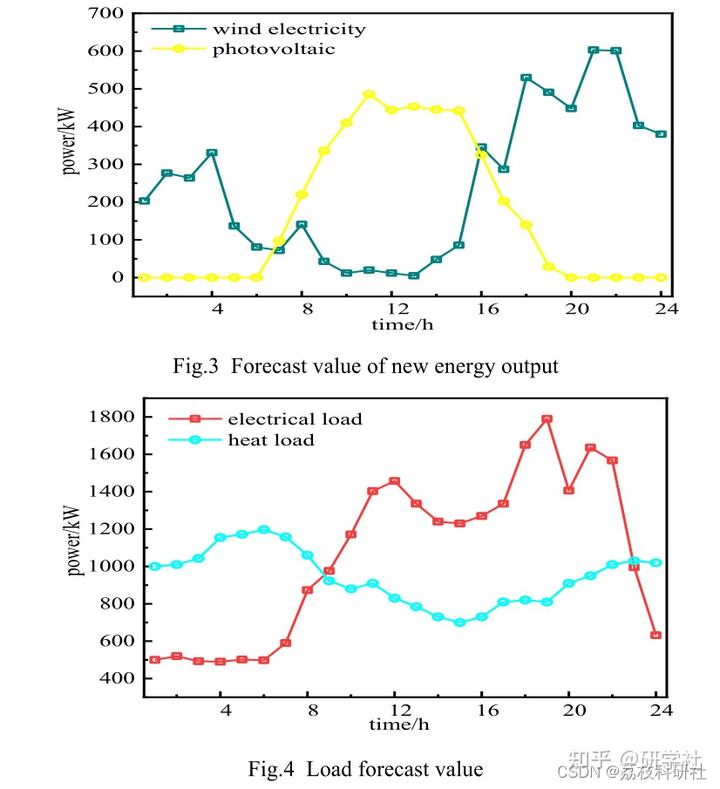
复现结果图:


2.2 双层目标函数迭代曲线
原文图:
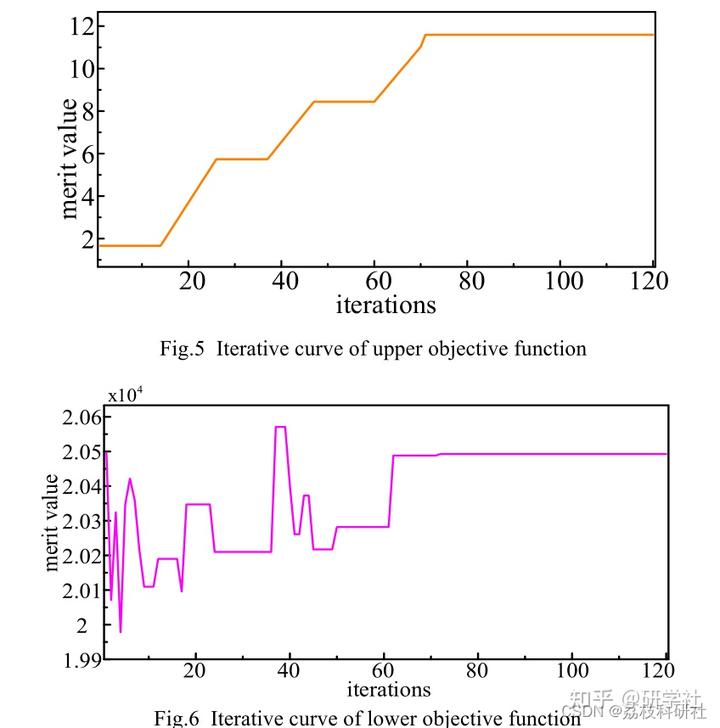
复现结果图:
迭代次数改为300次,效果更不错喔。


2.3 动态电价、热价
IESP的定价策略如图7和图8所示。为了在系统中优先考虑新能源的消耗,在输电网定价中始终包含价格策略,为能源用户提供更好的价格。由图7可以看出,IESP电价的波动趋势与输电网分时电价是一致的,其目的是鼓励用户主动购电。同样,热价格也与热负荷的变化趋势有关。
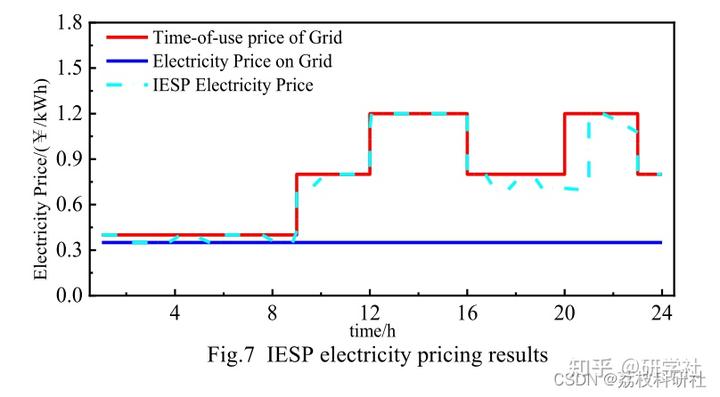
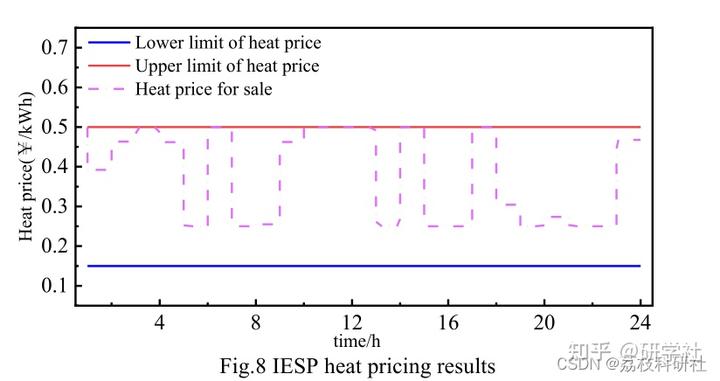
复现结果图:
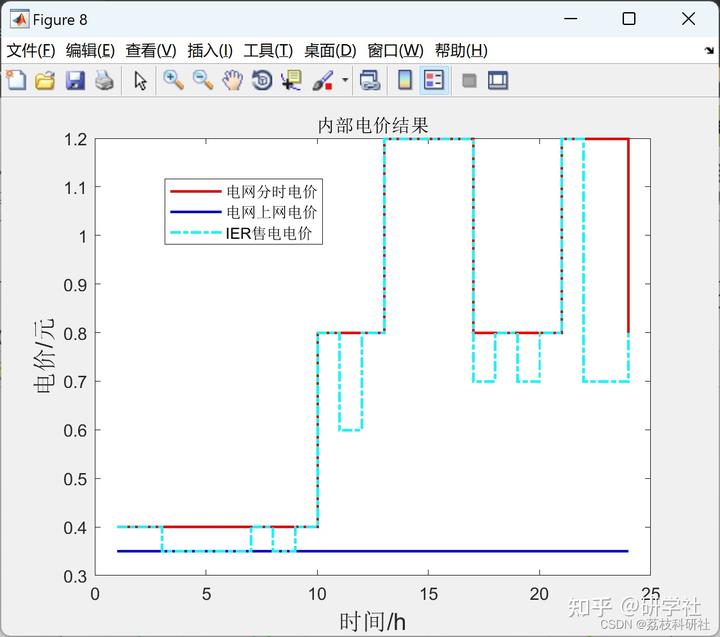
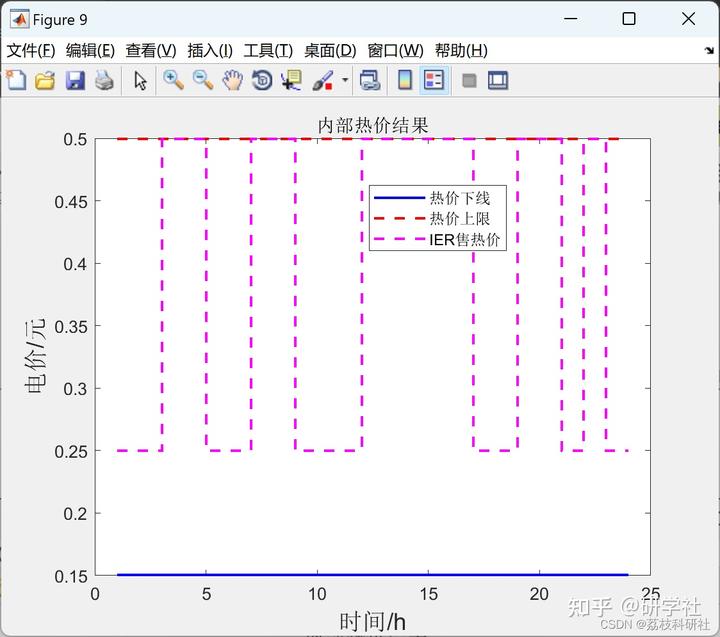
2.4 需求响应前后电、热负荷曲线
需求响应前后的电负荷和热负荷曲线如图9和图10所示。从图中可以看出,在电价激励下,为了降低总用电成本,需求响应前后的用电负荷曲线呈现出“削峰填谷”的特征。用户原始用电负荷曲线的两个峰值出现在11:00 - 12:00和18:00 - 22:00。用户侧优化后,峰值负荷明显降低,并转入0:00 - 8:00和23:00 - 24:00的低负荷谷阶段,电力负荷曲线波动明显减小。此外,用户热负荷响应的趋势与用电负荷的趋势大致相同,总体响应后的曲线符合调峰特性。为了保证用户的舒适性,热负荷传递相对较小。
原文图:
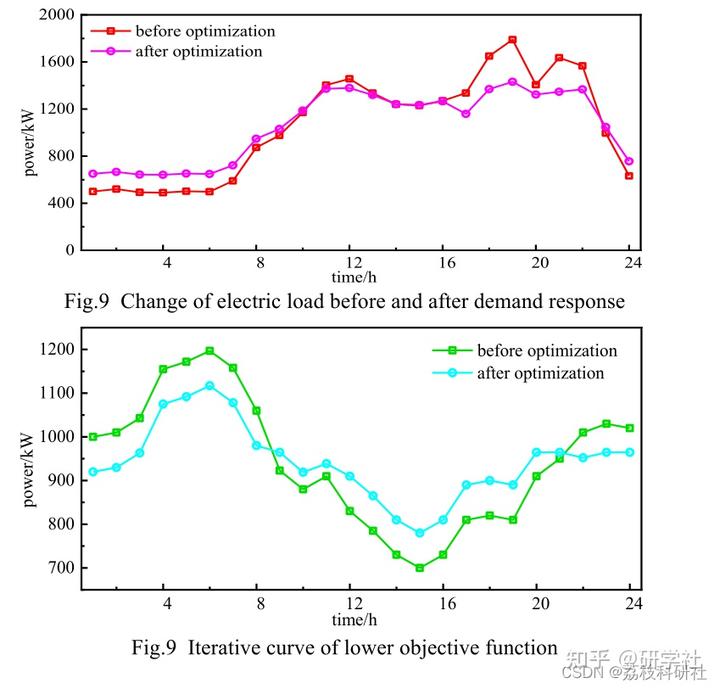

编辑
复现结果图:
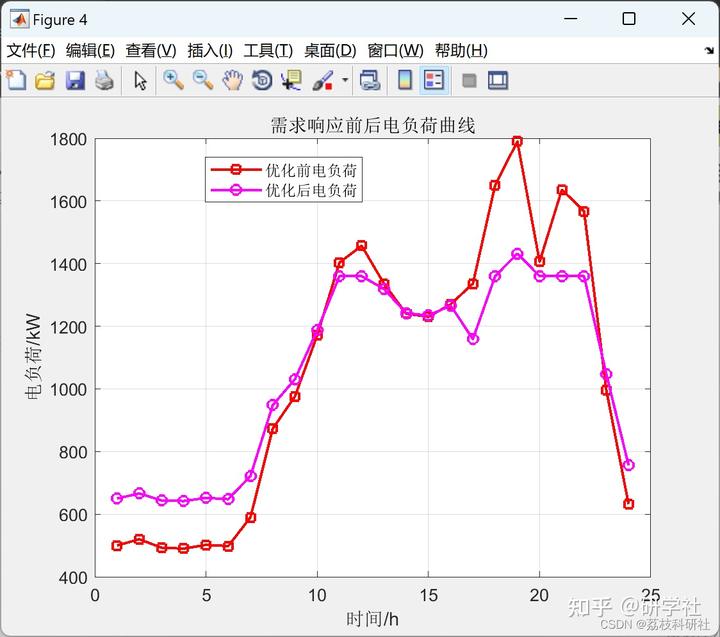
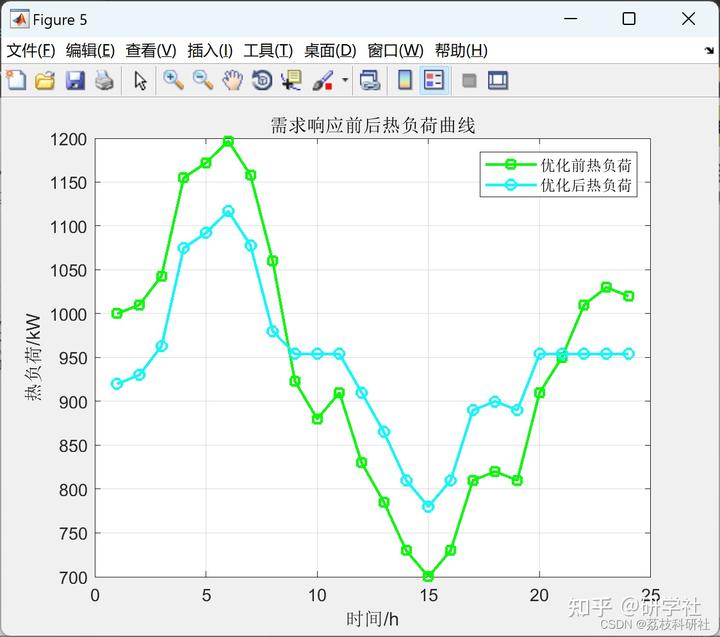
3 参考文献
部分理论来源于网络,如有侵权请联系删除。
[1]Y. Zhou, H. Ding, Y. Liang, Z. Ji, Z. Wu and Q. Hu, "Dynamic pricing of integrated energy service providers based on master-slave game," 2021 IEEE Sustainable Power and Energy Conference (iSPEC), Nanjing, China, 2021, pp. 1891-1896, doi: 10.1109/iSPEC53008.2021.9735953.

